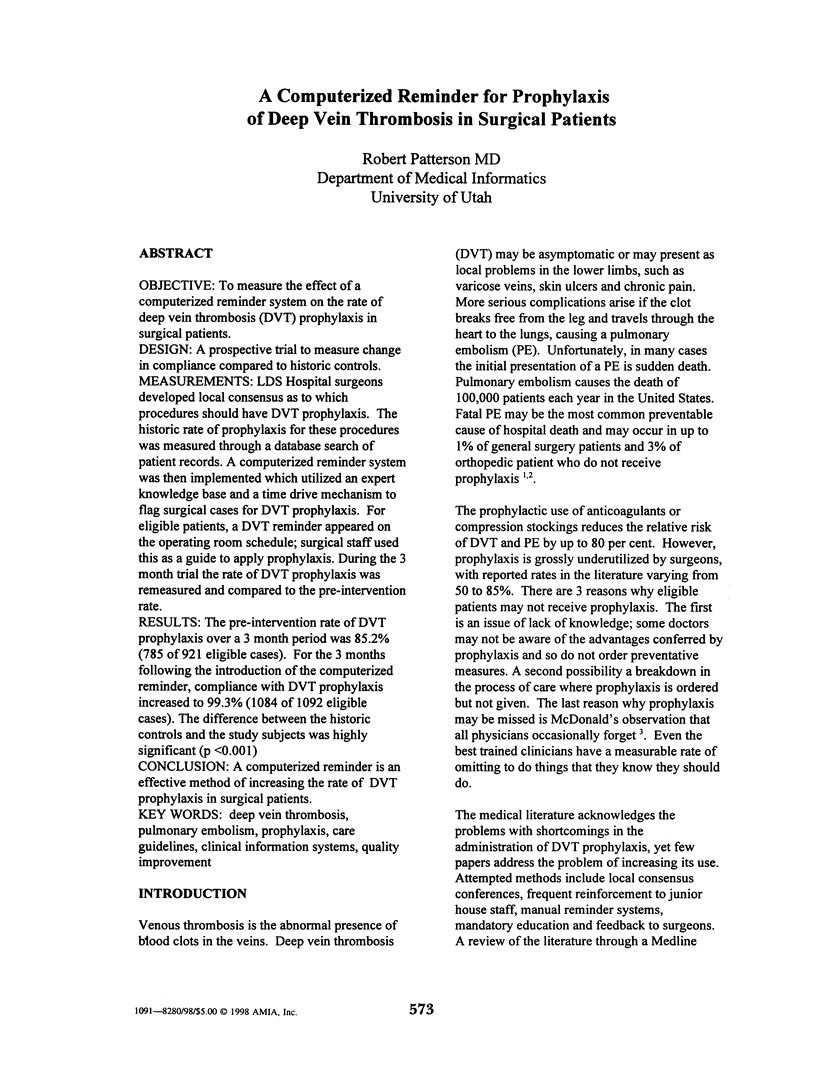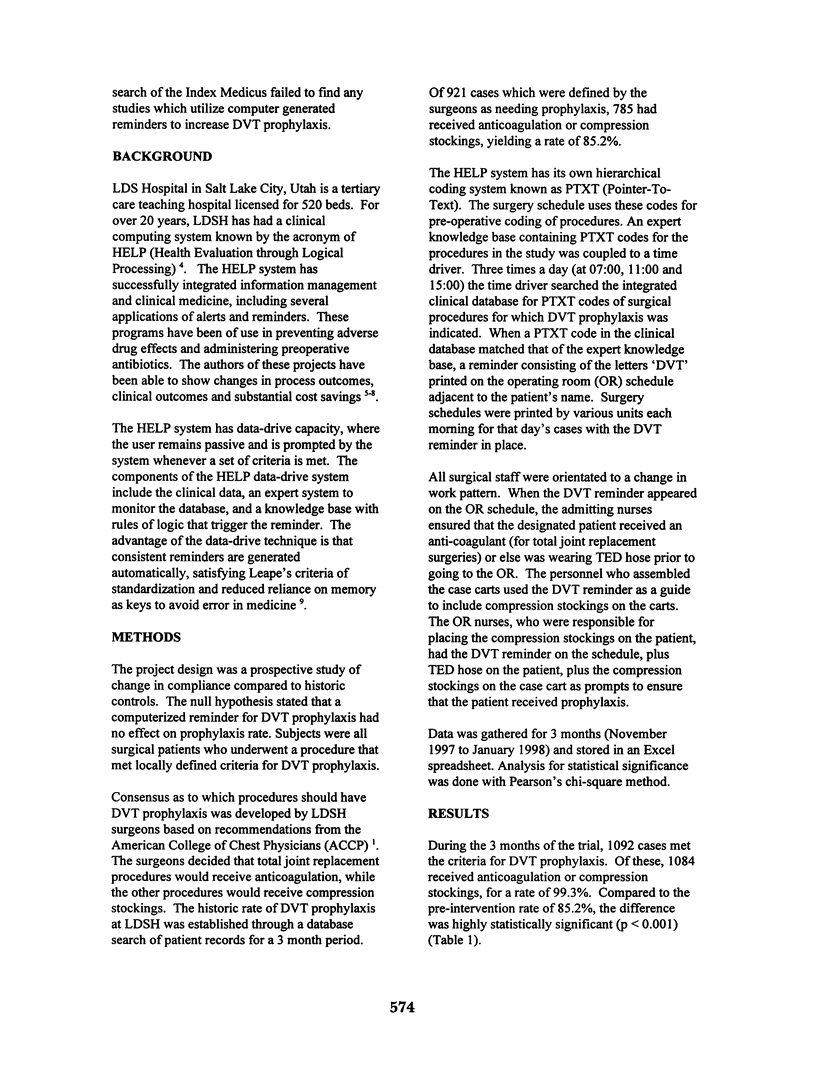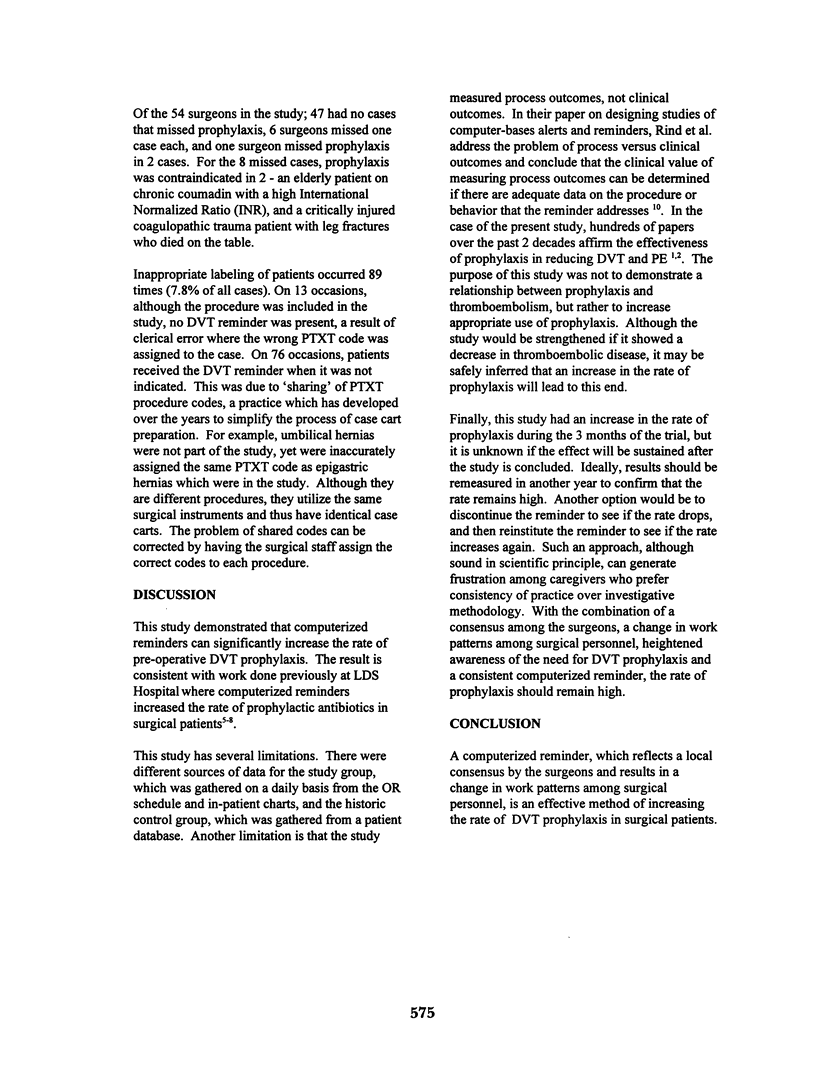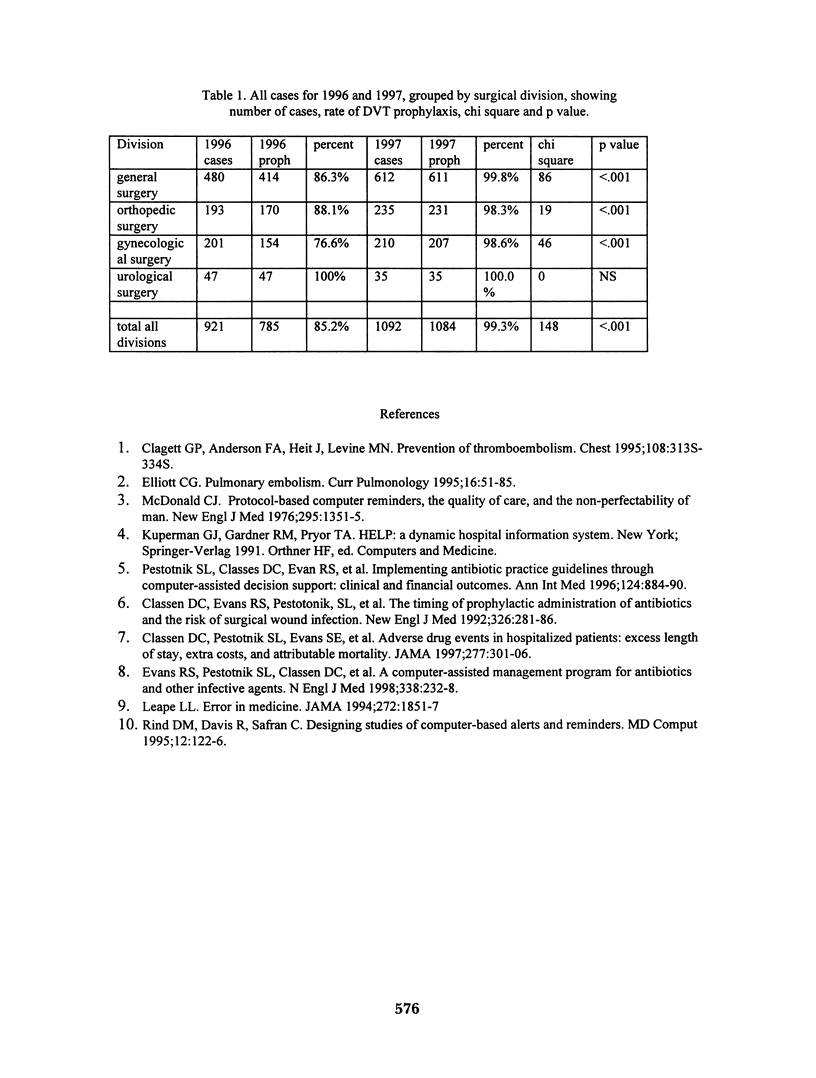Abstract
OBJECTIVE: To measure the effect of a computerized reminder system on the rate of deep vein thrombosis (DVT) prophylaxis in surgical patients. DESIGN: A prospective trial to measure change in compliance compared to historic controls. MEASUREMENTS: LDS Hospital surgeons developed local consensus as to which procedures should have DVT prophylaxis. The historic rate of prophylaxis for the procedures was measured through a database search of patient records. A computerized reminder system was then implemented which utilized an expert knowledge base and a time drive mechanism to flag surgical cases for DVT prophylaxis. For eligible patients, a DVT reminder appeared on the operating room schedule; surgical staff used this as a guide to apply prophylaxis. During the 3 month trial the rate of DVT prophylaxis was remeasured and compared to the pre-intervention rate. RESULTS: The pre-intervention rate of DVT prophylaxis over a 3 month period was 85.2% (785 of 921 eligible cases). For the 3 months following the introduction of the computerized reminder, compliance with DVT prophylaxis increased to 99.3% (1084 of 1092 eligible cases). The difference between the historic controls and the study subjects was highly significant (p < 0.001). CONCLUSION: A computerized reminder is an effective method of increasing the rate of DVT prophylaxis in surgical patients.
Full text
PDF



Selected References
These references are in PubMed. This may not be the complete list of references from this article.
- Clagett G. P., Anderson F. A., Jr, Heit J., Levine M. N., Wheeler H. B. Prevention of venous thromboembolism. Chest. 1995 Oct;108(4 Suppl):312S–334S. doi: 10.1378/chest.108.4_supplement.312s. [DOI] [PubMed] [Google Scholar]
- Classen D. C., Evans R. S., Pestotnik S. L., Horn S. D., Menlove R. L., Burke J. P. The timing of prophylactic administration of antibiotics and the risk of surgical-wound infection. N Engl J Med. 1992 Jan 30;326(5):281–286. doi: 10.1056/NEJM199201303260501. [DOI] [PubMed] [Google Scholar]
- Classen D. C., Pestotnik S. L., Evans R. S., Lloyd J. F., Burke J. P. Adverse drug events in hospitalized patients. Excess length of stay, extra costs, and attributable mortality. JAMA. 1997 Jan 22;277(4):301–306. [PubMed] [Google Scholar]
- Evans R. S., Pestotnik S. L., Classen D. C., Clemmer T. P., Weaver L. K., Orme J. F., Jr, Lloyd J. F., Burke J. P. A computer-assisted management program for antibiotics and other antiinfective agents. N Engl J Med. 1998 Jan 22;338(4):232–238. doi: 10.1056/NEJM199801223380406. [DOI] [PubMed] [Google Scholar]
- Leape L. L. Error in medicine. JAMA. 1994 Dec 21;272(23):1851–1857. [PubMed] [Google Scholar]
- McDonald C. J. Protocol-based computer reminders, the quality of care and the non-perfectability of man. N Engl J Med. 1976 Dec 9;295(24):1351–1355. doi: 10.1056/NEJM197612092952405. [DOI] [PubMed] [Google Scholar]
- Pestotnik S. L., Classen D. C., Evans R. S., Burke J. P. Implementing antibiotic practice guidelines through computer-assisted decision support: clinical and financial outcomes. Ann Intern Med. 1996 May 15;124(10):884–890. doi: 10.7326/0003-4819-124-10-199605150-00004. [DOI] [PubMed] [Google Scholar]
- Rind D. M., Davis R., Safran C. Designing studies of computer-based alerts and reminders. MD Comput. 1995 Mar-Apr;12(2):122–126. [PubMed] [Google Scholar]


